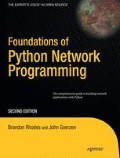Abstract
As we outlined at the beginning of the previous chapter, the actual movement of e-mail between systems is accomplished through SMTP: the “Simple Mail Transport Protocol.” It was first defined in 1982 in RFC 821; the most recent RFC defining it is 5321. It typically serves in two roles:
-
When a user types an e-mail message on a laptop or desktop machine, the e-mail client uses SMTP to submit the e-mail to a real server that can send it along to its destination.
-
E-mail servers themselves use SMTP to deliver messages, sending them across the Internet to the server in charge of the recipient e-mail address’s domain (the part of the e-mail address after the @ sign).
Access this chapter
Tax calculation will be finalised at checkout
Purchases are for personal use only
Preview
Unable to display preview. Download preview PDF.
Rights and permissions
Copyright information
© 2010 by Brandon Rhodes and John Goerzen
About this chapter
Cite this chapter
Rhodes, B., Goerzen, J. (2010). CHAPTER 14 SMTP. In: Foundations of Python Network Programming. Apress. https://doi.org/10.1007/978-1-4302-3004-5_13
Download citation
DOI: https://doi.org/10.1007/978-1-4302-3004-5_13
Publisher Name: Apress
Print ISBN: 978-1-4302-3003-8
Online ISBN: 978-1-4302-3004-5
eBook Packages: Professional and Applied ComputingApress Access BooksProfessional and Applied Computing (R0)

